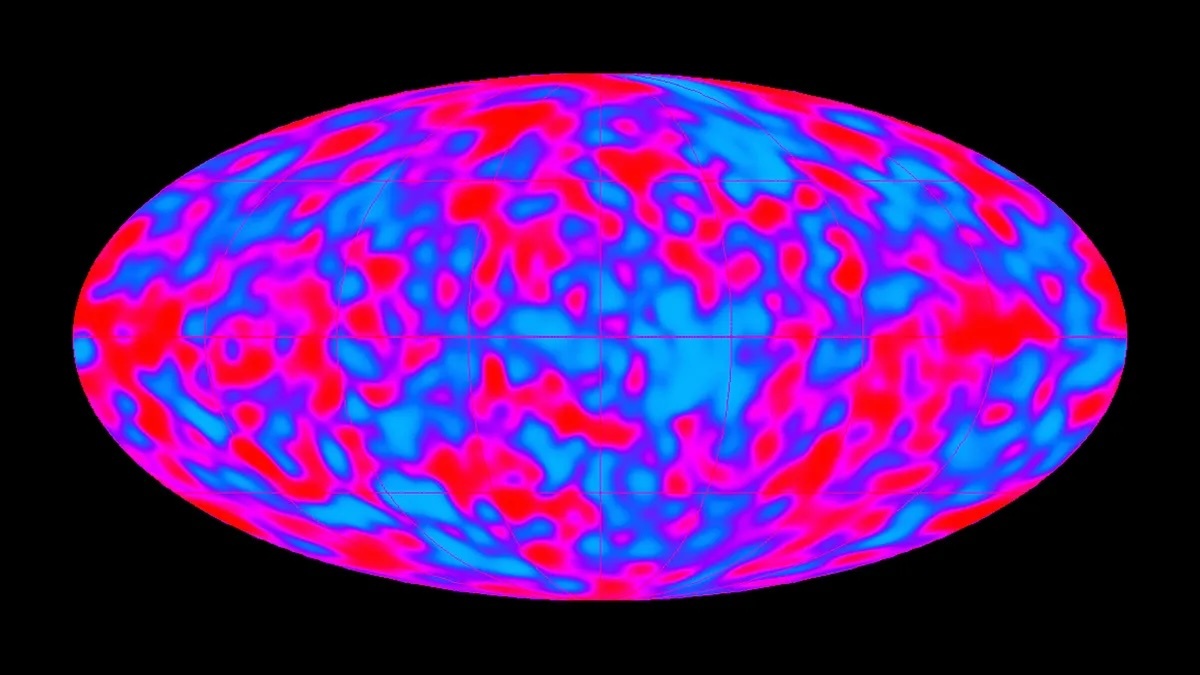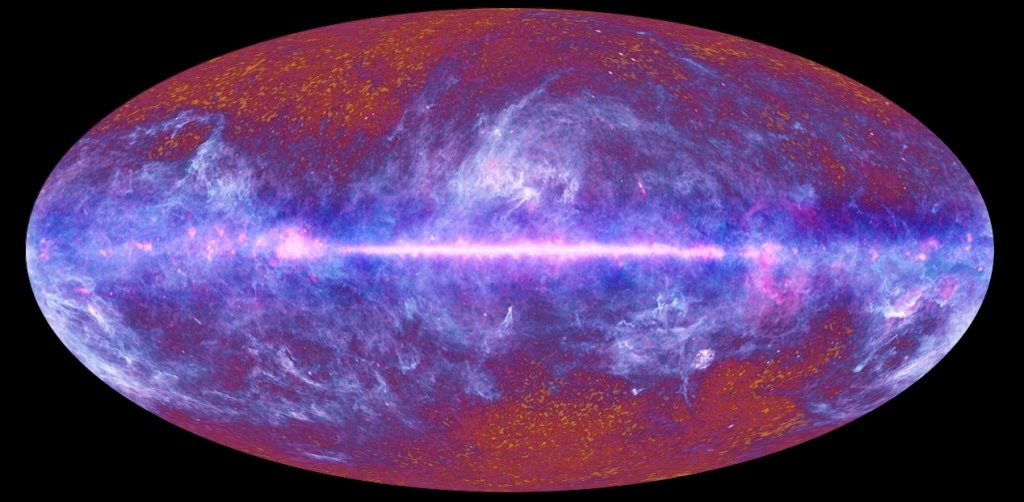21.05.2024
Leftover light from the young universe has a major flaw, and we don't know how to fix it.

Leftover light from the young universe has a major flaw, and we don't know how to fix it. It's the cold spot. It's just way too big and way too cold. Astronomers aren't sure what it is, but they mostly agree that it's worth investigating.
The cosmic microwave background (CMB) was generated when our universe was only 380,000 years old. At the time, our cosmos was about a million times smaller than it is today and had a temperature of over 10,000 kelvins (17,500 degrees Fahrenheit, or 9,700 degrees Celsius), meaning all of the gas was plasma. As the universe expanded, it cooled, and the plasma became neutral. In the process, it released a flood of white-hot light. Over the billions of years since, that light has cooled and stretched to a temperature of around 3 kelvins (minus 454 F, or minus 270 C), putting that radiation firmly in the microwave band of the electromagnetic spectrum.
The CMB is almost perfectly uniform, but there are tiny differences in temperature to about 1 part per million, and those imperfections, which look like splotches of various shapes and sizes, are the juiciest part about it. We can't predict exactly what the fluctuations will be, which exact spots will be cold and which spots will be hot. That's because the light we're seeing is coming from a part of the universe that is now pulled away from observable view.
This means we have to rely on statistics to understand the CMB. We can't say what splotches will appear where; we can only use physics to understand the average size of splotches and how hot or cold they might be, on average.
The cold spot
Just about everything with the CMB is fine and dandy. We understand where the splotches come from, and over the decades, we've built increasingly refined telescopes and satellites for getting a better look. In fact, the detection and measurement of the CMB is one of the biggest success stories in science.
And then there's the cold spot.
Now there are a lot of cold spots in the CMB. But there's one — the cold spot — that stands out. It even stands out visually. If you look at a map of the CMB — where the entire sphere of the sky is compressed into a weird, vaguely oval shape — it's down and a little to the right. In the sky, it's in the direction of the constellation Eridanus.
The cold spot is strangely cold. Depending on how you define the edge of the spot, it's about 70 microkelvins colder than average, compared with the average run-of-the-mill cold spot that's only 18 microkelvins colder than average. In its deepest parts, it's 140 millikelvins colder than average.
It's also big — about 5 degrees across, which doesn't sound like a lot, but that's about 10 full moons lined up side by side. The average spot on the CMB is less than 1 degree. So it's not only weirdly cold but also weirdly big.
Now this is where things get tricky. It's easy to see the cold spot. Astronomers first spotted it with NASA's Wilkinson Microwave Anisotropy Probe in the early 2000s, and the European Space Agency's Planck satellite confirmed the cold spot's existence. So it wasn't just a fluke of the instrument, a measurement error or some weird alien interference — it's a real thing.
This leads to another question: Do we care?
We can't say for certain what splotches on the CMB will appear where; we only get statistical information. There's been a lot of back-and-forth on this, but the general consensus is that yes, we should not reasonably expect the cold spot to be so big and so cold just out of random chance, that based on our understanding of the physics of the earlier universe, it's just way too out of line.
Yes, randomly big and cold spots should appear occasionally, but our chances of just seeing one out of pure random chance is less than 1% (and might be much lower, depending on whom you ask). So although we could just say we got super unlucky and got a cold spot, it's rare enough that it demands some more attention.
So it's not a measurement error, and it's probably not random chance. So what is it?

A map of the sky shows the Cosmic Microwave Background (CMB), a remnant of the period of the early universe when this lost dark matter might have existed. (Image credit: © ESA and the Planck Collaboration)
The hot debate
The favored explanation for the strange nature of the cold spot is that it's due to a gigantic cosmic void sitting between us and the CMB in that direction. Cosmic voids are big patches of almost nothing. But despite that nothingness, they do influence CMB light, and that's because the voids are evolving.
When light from the CMB first enters a void, it gains a little energy as it transitions from a high-density to low-density environment. In a perfectly static universe, the light would lose an equivalent amount of energy when it exited the other side. But because the voids are changing, when the light first enters, the void might be relatively small and shallow, and by the time it leaves, the void is big and deep.
This leads to an overall loss of energy of CMB light crossing the void — a process known as the integrated Sachs-Wolfe effect.
So a giant void could potentially explain the cold spot, but there's one problem: We're not sure if there's actually a giant void in that direction. We have maps and galaxy surveys in that part of the sky, but they're all incomplete in some way; they either don't capture every galaxy, or they don't span the entire volume of the supposed void. So this, too, has had significant back-and-forth in the literature, with some groups claiming to identify a supervoid and others saying there's nothing special there.
Plus, even if there were a supervoid in that direction, it's not clear that it would give a strong enough effect to create the cold spot we see.
This ambiguity leaves room for some out-of-the-box proposals, like the idea that the cold spot is a remnant intersection point between our universe and a neighboring one. But even that hypothesis fails to explain all of the cold spot's properties.
Does the cold spot invalidate the Big Bang? Absolutely not. Is it worth looking into? Almost certainly. Will we ever conclusively figure out what it is? Maybe not.
That's the way science is. It's never perfect, and there's always some little thorn in some theory's side. Sometimes, those thorns blossom to reveal new kinds of TK, sometimes those thorns just wither away as scientists slowly chip away at it, and sometimes they just sit there, never fully resolved, never fully answered, but never rising to the level of needing more attention.
Either way is OK by me. Why? Because nothing is perfect in this universe, not even our descriptions of it.
Quelle: SC
